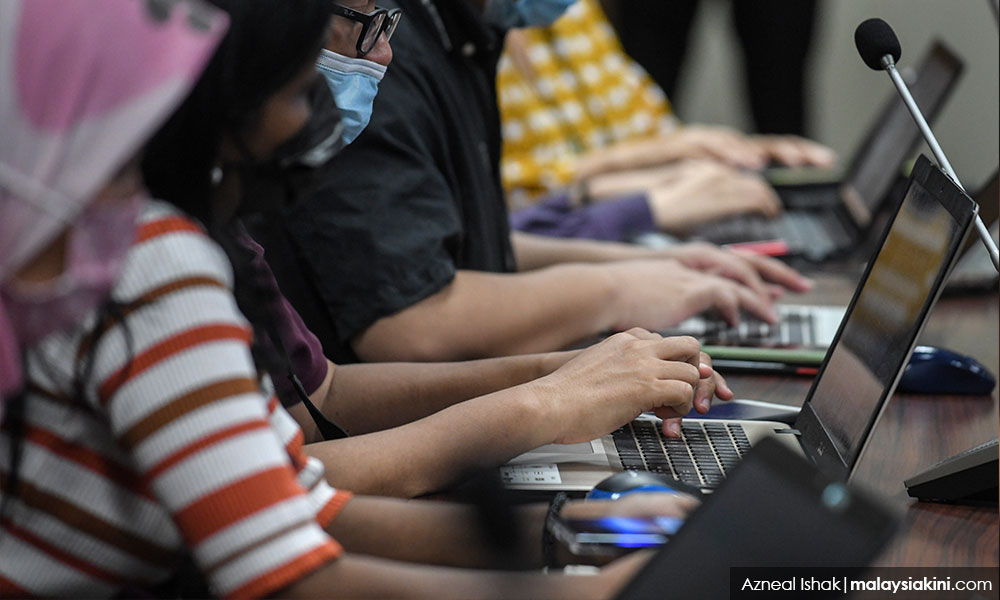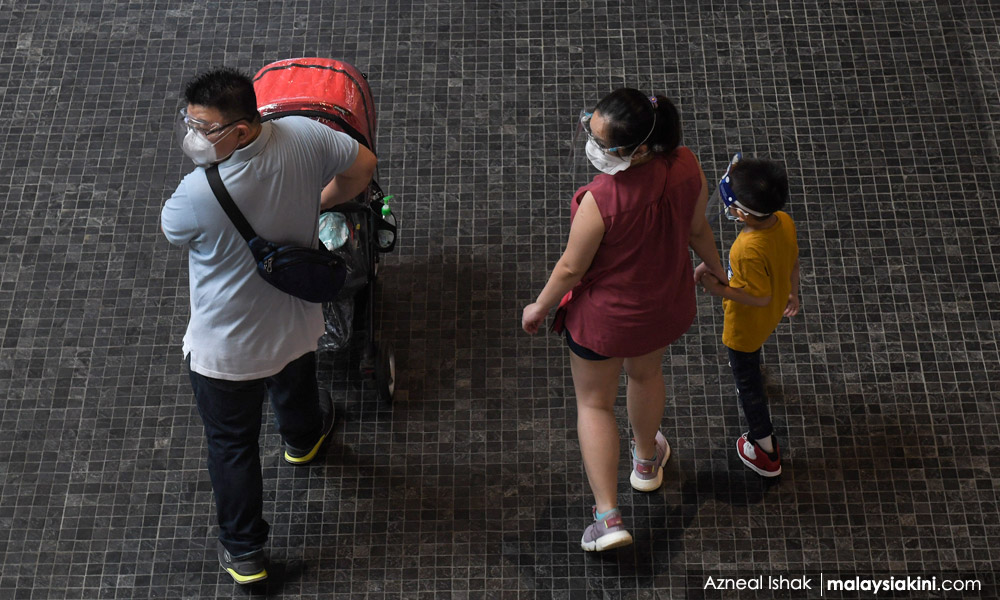My 84-year-old aunt died from Covid-19 in a Penang nursing home. She was not vaccinated. Would she have lived had she taken the jab?
My brother in Perth got his first jab after hesitating for months. That was after I insisted he stopped ingesting “news” from conspiracy sites and stories forwarded by friends of other friends.
I know a devout family that sees the pandemic as the signs of end times. What can happen will happen, the mother said. Faith and prayers are their shields. Vaccines are not needed.
A colleague, highly sceptical of pharmaceutical companies but otherwise intelligent, constantly sends me “peer-reviewed papers” on alternative treatments for Covid-19. He is unvaccinated.
Unqualified advice? Understandable hesitancy? Inexplicable faith? Valid scepticism of ‘big pharma’?
Whatever it is, we are all party to believing and spreading unverifiable ‘information’ about Covid vaccines.
Lingering dread caused by long lockdowns has turned many of us into active spreaders of dubious texts, doctored photos and deep-fake videos to the extent that YouTube has banned misinformation about vaccines and mask-wearing.
Misinformation is not new though. Governments, protest movements, commercial operators, private citizens – all have historically used and abused 'information' to convince and persuade, at times with pernicious agendas.

Anti-vaxxers, for instance, have reportedly distorted valid research findings to spread their politicised anti-vaccination message.
No one, including journalists, is naturally immune to political and socio-medical misinformation that have plagued social media since Covid-19 hit the headlines.
According to researchers at RMIT FactLab, "even if the information is shared in good faith and not for the purpose of deceiving or misleading others, the spread of misinformation is highly problematic”.
“Exposure to misinformation engenders faulty beliefs in others and undermines efforts to curtail the spread of Covid-19 by reducing adherence to social distancing measures and increasing vaccine hesitancy.”
Why do we do what we do? I defer to Nobel laureate in economic sciences and psychologist Daniel Kahneman for a plausible explanation.
In his book, 'Thinking, Fast and Slow' (2011), which I have read, Kahneman highlights our natural tendency to react unthinkingly (System 1) than to reflect (System 2) on what we read, hear, watch and experience.

System 1 vs System 2
For instance, each time I watch the frantic anti-vaccination “freedom” protests, listen to divisive demagogues or whomever I deem are breaking the Golden Rule (treat others as one wants to be treated), System 1 thinking kicks in. I judge.
And, I did share unverified information on a ‘Sars-like virus from China’ with loved ones before the virus got its formal name. Could I have paused and thought about what I had heard or read about the virus from Wuhan? Yes, in hindsight.
But seeing the randomly seated masked passengers on my return flight to Sydney in January last year, and remembering what I had read about Sars from Hong Kong in 2002, my impulses kicked in.
Likewise, three decades ago, System 1 did rile my reactions to race-related issues in Australia where I re-started my journalism work. As the only Asian reporter in a white majority newsroom, my choice of sources, story angles and overall narrative was understandably skewed.
System 2, however, phased in when I did a final edit.
Was I thorough in my research? Did I carefully check the veracity of what my sources said? Did I correctly paraphrase their quotes?
Did I approach different sources for different opinions, including ones that challenge my values?
Was I as accurate as I could be in the claims reported and context implied? Was I fair and accurate, truthful and ethical in my stories?
These journalistic self-checks are especially pertinent in stemming the deluge of dubious information on social media today where claims and theories are laced with medicalese, its pseudo-scientific language structured and packaged to read like authoritative reports.
Stemming misinformation flow
I have received much misleading ‘information’ forwarded from well-meaning friends. The chain of misinformation is endless, each block effectively reinforced by the senders’ search algorithms and unconscious biases.
Where appropriate, I respectfully alert my friends that what they had posted and re-posted is possibly fake and, therefore, to be read with much scepticism.

It will take some time before trust returns in what we receive and read on social media. Plugging the exchange of meaningless content and pointless videos starts with us.
The onus falls on each social media user to learn how to recognise falsehoods and become more aware of why we feel we need to pass along certain 'information' we receive from friends or read online.
More critical judgement of information will likely result, and more reasonable actions taken, if we consciously engage the slower rational System 2 process to lead the fast gut-driven System 1 mode.
As Kahneman alluded to 10 years ago, while our System 1 thought process is innate, we can teach ourselves to engage more with our System 2 rational mode. - Mkini
ERIC LOO is the founding editor of the academic journal Asia Pacific Media Educator.
The views expressed here are those of the author/contributor and do not necessarily represent the views of MNKtT.



No comments:
Post a Comment
Note: Only a member of this blog may post a comment.